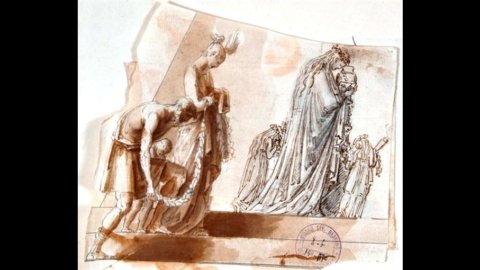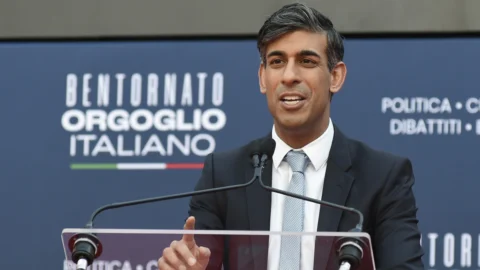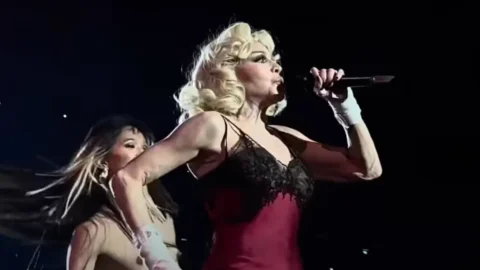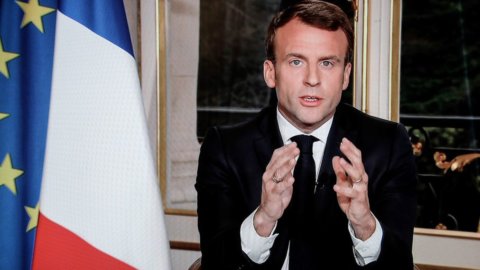An event sponsored by Roma Capitale, Department of Cultural Policies and the Historic Center - Superintendency of Cultural Heritage and the Municipality of Bassano del Grappa with the care of Giuliana Ericani, Director of the Museum Library Archive of Bassano del Grappa, who places the expression of Canova's drawing from two points of view, the first the stylistic and the first line.
In the exhibition the sheets are exhibited that perfectly tell the variety of his sign and how he approached the project of execution of the work and then continues on two main paths of interpretation of Canova's work: the relationship with ancient sculpture of the Roman collections and with historical and cultural figures of his time.
It will also be possible to admire the designs for the monuments and sculptures ofClement XIV, Napoleon Bonaparte, Maria Luisa of Habsburg, Maria Christina of Austria, Charles III and Ferdinand I of Bourbon, George Washington, Vittorio Alfieri, Orazio Nelson, and Paolina Borghese Bonaparte and works commissioned by George IV, King of England and Josephine de Beauharnais Bonaparte. Next to it we find the engravings, the plaster and terracotta sketches and two paintings. But above all it will be possible to see and appreciate the drawings for three important works, the Italian Venus, Creugante and Damosseno for Pius VII e the Hercules and Lica for the banker Torlonia.
"An exhibition - says the Councilor for Cultural Policies and the Historic Center of Rome Capital Dino Gasperini – which offers a different point of view from the usual one, allowing the public to understand what lies behind the artist's great works. From inspiration to work. A journey on the trail of the idea, an interesting journey that traces the story of a genius in drawing. A different point of view from the usual one, which does not want to move souls, not only at least, but allow the public to understand what is hidden behind the artist's great works. Here we study, more here we observe Canova "studying". From drawing to drawing, his thought emerges, summarized in a few simple strokes destined to be modified and retouched several times. Personal signs, dictated by inspiration, even sudden, that Canova wrote down on paper for himself, as a basis on which to work later, with firm emotions and lucid thinking".
“This is a rare opportunity to get closer to the knowledge of Canova sculptor through the drawings – thus intervenes the Mayor of Rome John Alemanno - which first of all allow us to grasp his profound meditation on classical art and constitute the first phase of the artistic genesis of his masterpieces. Needless to underline the greatness of the artist who, already in his lifetime, was recognized by his contemporaries, nor the intensity of an unparalleled career. It is important to remember the uniqueness of Canova's bond with the city of Rome, a true cultural capital between the 1802th and 1815th centuries, where, having moved from the Veneto region, he was able, thanks to the study of ancient works, to forge and direct his talent becoming the artist we know today. An "ideal debt", the one contracted with Rome, which immediately returned to the advantage of the city which saw the realization of his most valuable works. Let us not forget that, thanks to the appointment in XNUMX by Pius VII, Canova was inspector general of Antiquities and Fine Arts - a position that had been held by Raphael. The pontiff himself in XNUMX sent him to Paris as a delegate of the Papal State to recover some works of art stolen by the Napoleonic armies. Difficult and delicate assignment that made us know, even more, the complex and multifaceted personality of Canova, revealing the quality of political intelligence and diplomatic ability and making him an ambassador of our art”.
A fund, the Bassanese one, made up of 10 large albums and 8 notebooks that are not homogeneous in structure, including sheets of different sizes, from more than 500 to about ten millimeters, finished drawings of the academy and initial sketches, entire and partial projects for bas-reliefs in plaster and large sculptures in the round ... all to be seen.





